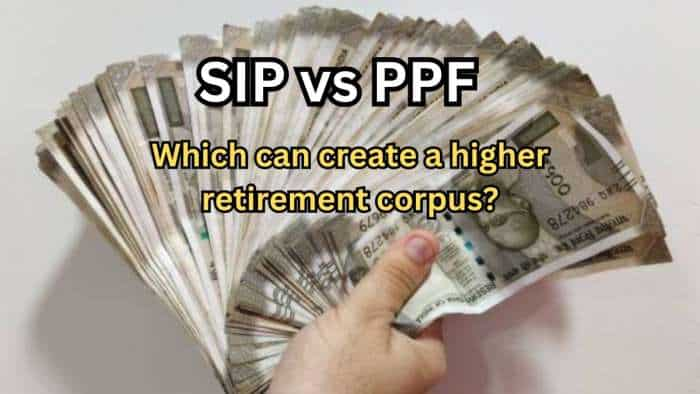Public Provident Fund: 3 options to extend PPF account after maturity
PPF offers tax exemption, coupled with the allure of tax-free returns, making it a preferred choice over other investment options.
)
PPF Investment: The Public Provident Fund (PPF) is one of the most preferred investment options for small savers with its enticing interest rates and tax advantages. With deposits as modest as Rs 500 and as substantial as Rs 1.5 lakh per annum, PPF has garnered immense popularity among investors seeking stability and tax benefits.
Under Section 80C of the Income Tax Act, PPF offers tax exemption, coupled with the allure of tax-free returns, making it a preferred choice over other investment options. Moreover, the provision of loan Against PPF caters to those grappling with financial emergencies, offering loans at competitive interest rates.
But what happens once the 15-year lock-in term of a PPF account concludes?
Investors are presented with three alternatives upon maturity to navigate their financial trajectory:
1. Close the Account and Withdraw Entire Proceeds
After the completion of the 15-year tenure, investors can opt to close their PPF account and withdraw the entire corpus. This entails submitting a duly filled Form C (or Form 2 in some banks) at the respective bank branch or post office where the PPF account is held. The corpus is then credited to the linked bank account, concluding the PPF journey.
2. Extend the Account Without Fresh Deposits
Post-maturity, investors have the option to extend their PPF account in five-year increments indefinitely, sans fresh deposits. While no additional contributions are accepted, partial withdrawals are permissible, subject to specific conditions. The accrued balance continues to earn interest at the prevailing rate throughout the extended period, offering a passive growth avenue for investors.
3. Extend the Account with Fresh Deposits
Opting for this alternative necessitates notifying the Account Office before the end of the year by filling out Form H. Failure to do so renders subsequent deposits irregular, devoid of any interest benefits under Section 80C of the Income Tax Act. While continuing with fresh contributions, investors are allowed one partial withdrawal per fiscal year, with withdrawal limits capped at 60 per cent of the credit balance at the beginning of the extended period.
4) Navigating Partial Withdrawals During Extension
Depending on the chosen extension option, investors can make partial withdrawals during the extended term. Those extending their account without fresh deposits are permitted one withdrawal per fiscal year, while those opting for fresh contributions can withdraw up to 60 per cent of the credit balance at the onset of each five-year block extension.
The post-maturity phase of a PPF account offers investors a spectrum of choices tailored to their financial goals and preferences. Whether opting for immediate liquidity, passive growth, or continued contributions, understanding these alternatives empowers investors to make informed decisions aligned with their financial aspirations.
Get Latest Business News, Stock Market Updates and Videos; Check your tax outgo through Income Tax Calculator and save money through our Personal Finance coverage. Check Business Breaking News Live on Zee Business Twitter and Facebook. Subscribe on YouTube.
RECOMMENDED STORIES

Monthly Pay Calculations: Is your basic salary Rs 24,900, Rs 51,500, Rs 70,000, or Rs 1,01,400? Know what can be your total salary?

Gratuity Calculation: What will be your gratuity on Rs 45,000 last-drawn basic salary for 6 years & 9 months of service?

Rs 1,500 Monthly SIP for 20 Years vs Rs 15,000 Monthly SIP for 5 Years: Know which one can give you higher returns in long term

Income Tax Calculations: What will be your tax liability if your salary is Rs 8.25 lakh, Rs 14.50 lakh, Rs 20.75 lakh, or Rs 26.10 lakh? See calculations

8th Pay Commission Pension Calculations: Can basic pension be more than Rs 2.75 lakh in new Pay Commission? See how it may be possible

SBI Revamped Gold Deposit Scheme: Do you keep your gold in bank locker? You can also earn interest on it through this SBI scheme

SIP vs PPF: Rs 1,00,000/year investment for 35 years; which scheme can generate a higher retirement corpus
01:47 PM IST










 Post Office PPF Calculation: How much will you get by investing Rs 2,000, Rs 6,000, and Rs 10,000 monthly for 15 years?
Post Office PPF Calculation: How much will you get by investing Rs 2,000, Rs 6,000, and Rs 10,000 monthly for 15 years? SIP vs PPF: Rs 1,00,000/year investment for 35 years; which scheme can generate a higher retirement corpus
SIP vs PPF: Rs 1,00,000/year investment for 35 years; which scheme can generate a higher retirement corpus PPF For Regular Income: How to get over Rs 1 lakh/month tax-free income from Public Provident Fund?
PPF For Regular Income: How to get over Rs 1 lakh/month tax-free income from Public Provident Fund? SIP vs PPF: Rs 1,10,000/year investment for 30 years; which scheme can generate a higher retirement corpus
SIP vs PPF: Rs 1,10,000/year investment for 30 years; which scheme can generate a higher retirement corpus PPF For Regular Income: How to get Rs 60,000/month tax-free income from Public Provident Fund?
PPF For Regular Income: How to get Rs 60,000/month tax-free income from Public Provident Fund?